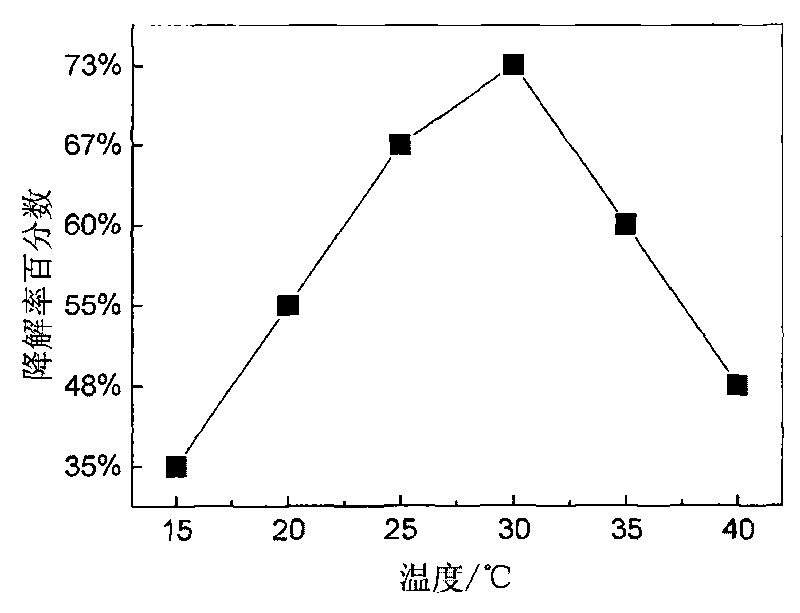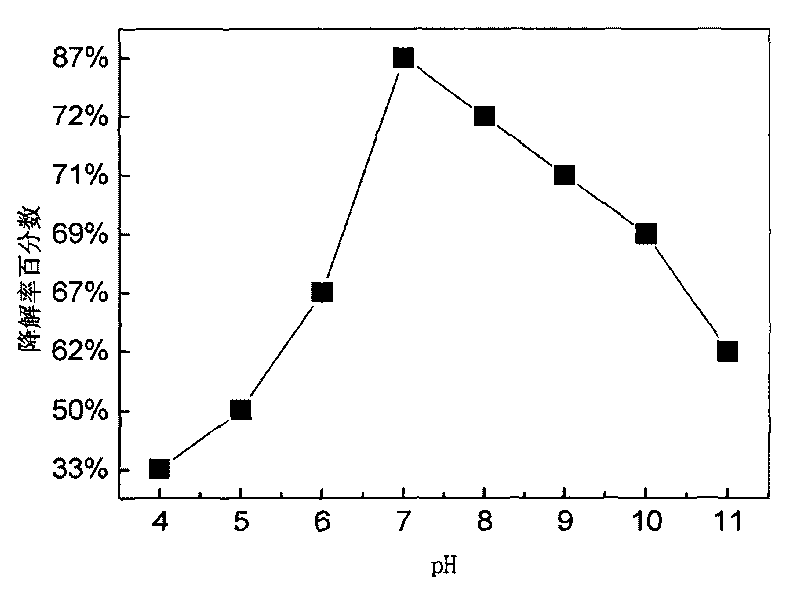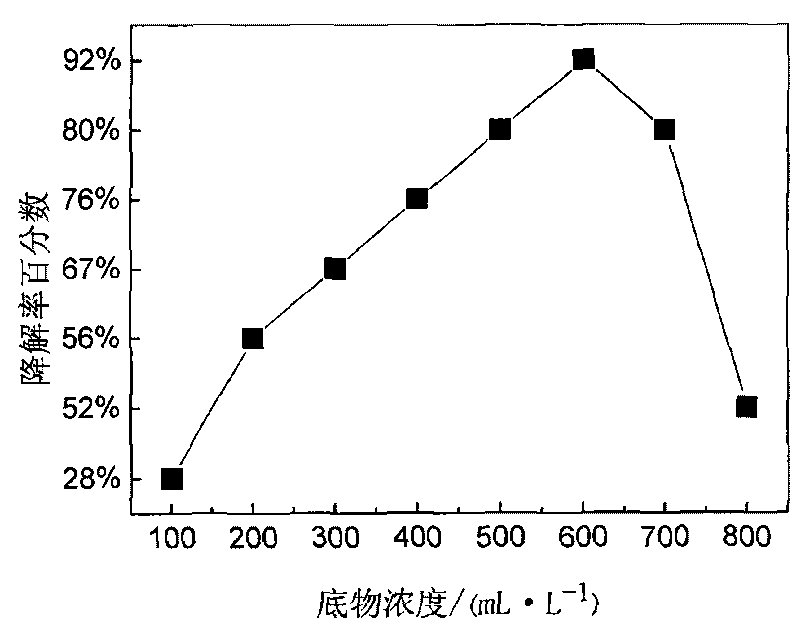Method for screening strains of penicillium sp. and application thereof in degradation of glyphosate waste water
A technology for glyphosate wastewater and screening methods, which is applied in the field of application of the strain in degrading glyphosate wastewater, and can solve problems such as incomplete mineralization of organic matter and being in the research stage
- Summary
- Abstract
- Description
- Claims
- Application Information
AI Technical Summary
Problems solved by technology
Method used
Image
Examples
preparation example Construction
[0030] The preparation method of Penicillium CTGU-CGL-002:
[0031] (1), the isolation steps of this strain
[0032] enrichment of a strain
[0033] In a 250mL Erlenmeyer flask, add 30mL enrichment medium, 10mL glyphosate wastewater, and then add 10mL sludge (total 50mL) that has been aerated for 24 hours, place in a shaker, and culture at a constant temperature of 30°C for 3 days.
[0034] The domestication process of the b strain
[0035] Add glyphosate wastewater, bacterial solution and inorganic salt medium under sterile conditions, the volume of glyphosate wastewater gradually increases from 10mL, 15mL to 30mL, the total volume of the culture solution is 50mL, and placed in a shaker at a constant temperature of 30°C Shaking culture, 4d is an acclimatization cycle, and three cycles of acclimatization are carried out. After each acclimatization period, the COD value of each bottle of culture solution was measured, and the degradation rate was calculated. In each group, ...
Embodiment 1
[0051] In a 250mL Erlenmeyer flask under sterile conditions, add 5mL glyphosate wastewater, 10mL bacterial solution, and inorganic salt medium (total 50mL), place in a shaker, and culture at a constant temperature of 30°C for 4 days. After 4 days, the strain's degradation rate of glyphosate wastewater reached 28.15%.
Embodiment 2
[0053] In a 250mL Erlenmeyer flask under sterile conditions, add 10mL of glyphosate waste water, 10mL of bacterial liquid, and inorganic salt medium (50mL in total), place in a shaker, and culture at a constant temperature of 30°C for 4 days. After 4 days, the strain's degradation rate of glyphosate wastewater reached 56.08%.
PUM
 Login to View More
Login to View More Abstract
Description
Claims
Application Information
 Login to View More
Login to View More - R&D
- Intellectual Property
- Life Sciences
- Materials
- Tech Scout
- Unparalleled Data Quality
- Higher Quality Content
- 60% Fewer Hallucinations
Browse by: Latest US Patents, China's latest patents, Technical Efficacy Thesaurus, Application Domain, Technology Topic, Popular Technical Reports.
© 2025 PatSnap. All rights reserved.Legal|Privacy policy|Modern Slavery Act Transparency Statement|Sitemap|About US| Contact US: help@patsnap.com



